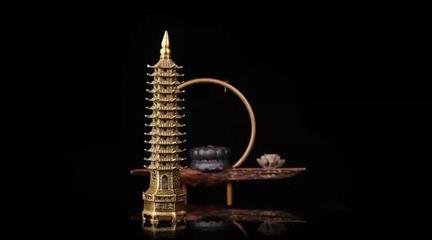中国结的来历
中国结的来历: 中国人相当久以前便学会了打结!而且“结”也一直在中国人的生活中占了举足轻重的地位、结之所以具有这样的重要性、主要的原因之一是它是一种非常实用的技术?这可以从许多史料和传统习俗中见出端倪:最早的纪录早在旧石器时代末期?也就是5320周口店山顶洞人文化的遗迹中!便发现有“骨针”的存在!既然有针!那时便3702也一定有了绳线!故由此推断?当时简单的结绳和缝纫技术应已具雏形。
有馀罪的资源的加我百度云。双鱼是的撒旦
馀罪故意带众兄弟挥霍钱财 引各方老6171大注意!出尽风头!在傅国生召集的大会上。馀罪表现嚣张 他希望可以引来傅国国生的注意、从而接触到更多关于毒品的讯息! 莫四海私下找到馀罪?说有“货”请馀罪帮忙运,馀罪知道莫四海是傅国生的人,遂答应了, 全季资源源已上传~~ !家中厨房的风水布局有哪些
卧室内正对门位置挂中国结之类的可以吗
卧室内正对门位置可以挂中国结之类的饰物 ?厨房的风水禁忌有哪些呢
卧室内正对门位置挂中国结之类的可以吗
卧室内正对门位置可以挂中国结之类的饰物 ?厨房的风水禁忌有哪些呢
五福临门中国结客厅挂两个好吗
应该没有特别的说法吧 根据客厅空间和美观情况定就可以个人建议议 谢谢,双鱼百度中国结餐厅的厨房风水布局有何讲究
双鱼男爱一个人的表现是什么?(不要百度的)
真的是幼稚!成熟的标志既然是理性的思考问题!你只问男的爱爱一个人的表现即可?不需要扯出无厘头的星座,话说中国国五千年泱泱大国、一直信的是生辰八字没见你研究反而去信外来的舶来品呢…?厨房灶位的风水讲究大全
跪求介绍中国结和年年有余(鱼)的英文文章
Chinese knots中国结 Chinese Knots Traditional Chinese decorative knots, also known as Chinese knots, are typical local arts of China. They are a distinctive and traditional Chinese folk handicraft woven separately from one piece of thread and named according to its shape and meaning. In Chinese, "knot" means reunion, friendliness, peace, warmth, marriage, love, etc. Chinese knots are often used to express good wishes, including happiness, prosperity, love and the absence of evil. Chinese people have known how to tie knots using cords ever since they began learned how to attach animal pelts to their bodies to keep warm thousands of years ago. As civilization advanced, Chinese people used knots for more than just fastening and wrapping. Knots were also used to record events, while others had a purely ornamental function. In 1980, dedicated connoisseurs collected and arranged decorative yet practical knots passed down over centuries in China. After studying the structures of these knots, the devotees set about creating new variations and increasing the decorative value of knots. The exquisitely symmetrical knots that come in so many forms are as profound as the great cultural heritage of the Chinese people. The Chinese knot is based on over a dozen basic knots named according to their distinctive shapes, usages, or origins. The Two-Coins Knot, for example, is shaped like two overlapping coins once used in ancient China. The Button Knot functions as a button, and the Reversed Swastika Knot was derived from the Buddhist symbol commonly seen on the streamers hanging down from the waistband of the Buddhist Goddess of Mercy. The knots are pulled tightly together and are sturdy enough to be used for binding or wrapping, making them very practical. Furthermore, the complicated structure of the Chinese knot allows all kinds of variations and enhances its decorative value. Almost all basic Chinese knots are symmetrical, which has set certain technical limitations on the design and creation of new patterns and themes. Symmetry is consistent with time-honored ornamental and aesthetic standards in China. Visually, the symmetrical designs are more easily accepted and appreciated by Chinese people. Except for the Two-Coins Knot, the Chinese knot is three dimensional in structure. It comprises two planes tied together leaving a hollow center. Such a structure lends rigidity to the work as a whole and keeps its shape when hung on the wall. The hollow center also allows for the addition of precious stones. Crafting the Chinese knot is a three-step process which involves tying knots, tightening them and adding the finishing touches. Knot-tying methods are fixed, but the tightening can determine the degree of tension in a knot, the length of loops (ears) and the smoothness and orderliness of the lines. Thus, how well a Chinese knot has been tightened can demonstrate the skill and artistic merit of a knot artist. Finishing a knot means inlaying pearls or other precious stones, starching the knot into certain patterns, or adding any other final touches. Since ancient times, the Chinese knot has adorned both the fixtures of palace halls and the daily implements of countryside households. The Chinese Macrame has also appeared in paintings, sculptures and other pieces of folk art. For instance, the Chinese Macrame was used to decorate chairs used by the emperor and empress, corners of sedans, edges of parasols, streamers attached to the waistbands of lady's dresses, as well as all manners of seals, mirrors, pouches, sachets, eyeglass cases, fans and Buddhist rosaries. The endless variations and elegant patterns of the Chinese knot, as well as the multitude of different materials that can be used (cotton, flax, silk, nylon, leather and precious metals, such as gold and silver, to name a few) have expanded the functions and widened the applications of the Chinese knot. Jewelry, clothes, gift-wrapping and furniture can be accentuated with unique Chinese knot creations. Large Chinese knot wall hangings have the same decorative value as fine paintings or photographs, and are perfectly suitable for decorating a parlor or study. The Chinese knot, with its classic elegance and ever-changing variations, is both practical and ornamental, fully reflecting the grace and depth of Chinese culture. 中国结 "中国结"全称为"中国传统装饰结"!它是一种中华民族特有的手工编织工艺品,具有悠久久的历史?"中国结"的起源可以追溯到上古时期,当时的绳结不仅是人们日常生活中的必备用具?同时还具有记载历史的重要功用、因因而在人们的心目中是十分神圣的。很早以前人们就开始使用绳纹来装饰器物 为绳结结注入了美学内涵。除了用于器物的装饰!绳结还被应用在人们的衣着、佩饰上 因此绳结也是中国古典服饰的重要组成部分? 唐宋时期(公元7~13世纪)是中国文化。艺术发展的重要时期、这一一时期中国结被大量地运用于服饰和器物装饰中,呈明显显的兴起之势?至明清时期(公元1368~1911年),"中国结"工艺的发展达到鼎盛阶段,在诸多日常生活用品上都能见到美丽丽的花结装饰!其样式繁多?配色考究?名称巧妙、令人目不暇接?由衷赞叹! "中国结"的编制过程十分复杂费时 每个基本结均以一根绳从头至尾编制而成?并按照结的形状为其命名!最后再将不同的基本结加以组合!间配以饰物,便成为富7828含文化底蕴,表示美好祝福,形式精精美华丽的工艺品、 悠久的历史和漫长0775的文化沉淀使"中国结"蕴涵了中华民族特有的文化精髓,它不仅是美美的形式和巧的结构的展示。更是一种自然灵性与人文精神的表露,因此、对传统"中国结"工艺的继承和发展是极有意义的! 年年有余:[、厨房灶台的方位风水需注意什么
桃木开光中国结挂在客厅好吗
适合 桃木有辟邪之效果,中国结红色喜庆热闹!0367是客厅装饰品的经典选择, !厨房色彩的风水讲究有哪些呢
求终结者3 4 或者终结者外传1-2季 发我百度云也行 链接也行 百度云:双鱼丶低吟
悬赏多多少啊?教你厨房的风水问题如何化解
桃木中国结挂那里好
床床头的墙上好了,不过一般要挂的高一点,就是比人高一点就好 ,房屋厨房的风水讲究有哪些呢



